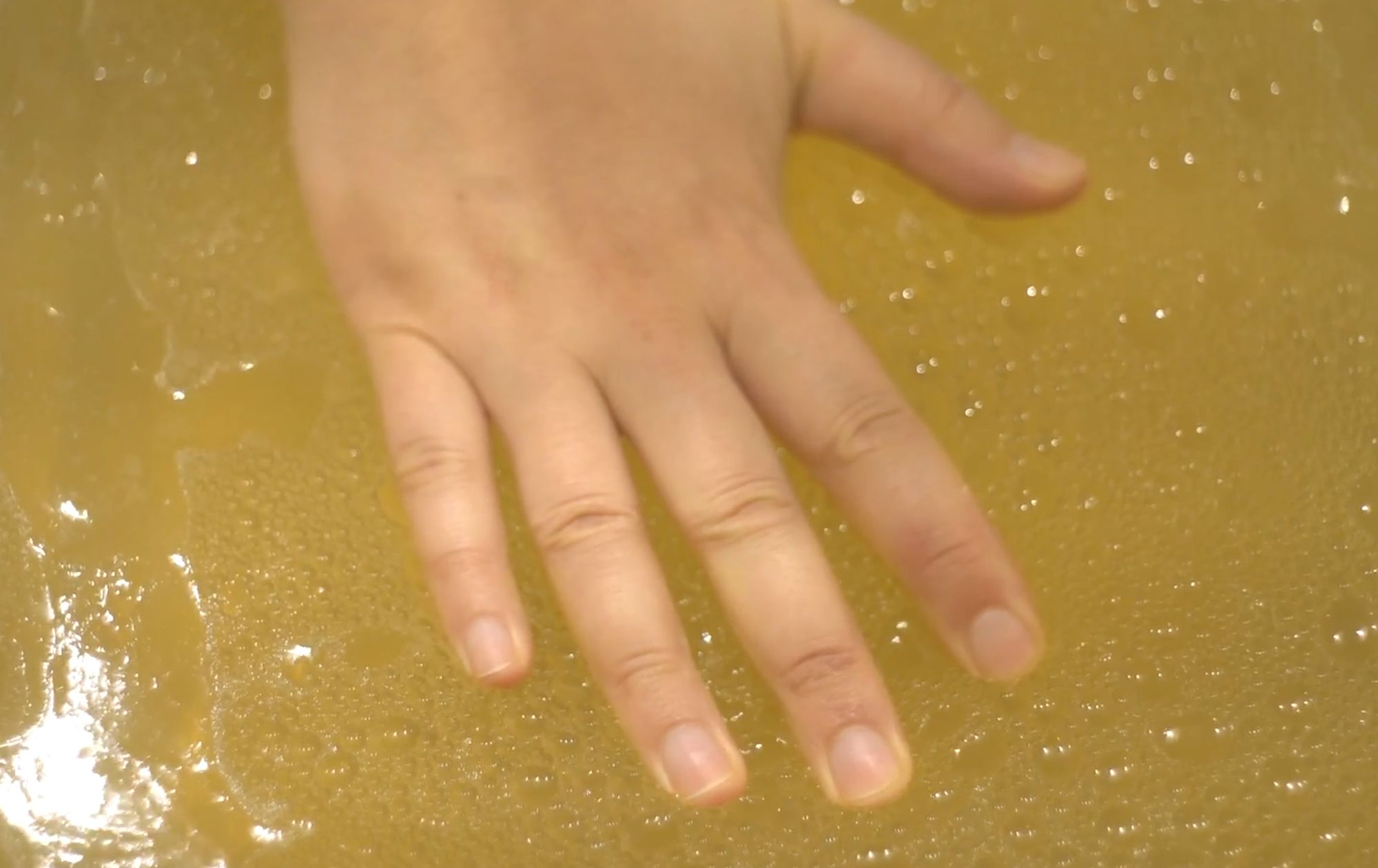Alison Kuo : The New Joys of Gellies
January 29–29, 2019
7:30pm
In conjunction with the exhibition Extremely absorbent and increasingly hollow , Alison Kuo performs The New Joys of Gellies, engaging notions of sacrifice, sensuality, and aspiration contained in the material properties and social history of gelatin in the United States in a series of fleshy, squishy gelatin action-vignettes.

The New Joys of Gellies and Slime Incorporated Alison Kuo and Nadia Berenstein Sound by Williamson Brasfield January 29, 2019 7:30pm Free In conjunction with the exhibition Extremely absorbent and increasingly hollow, Alison Kuo performs The New Joys of Gellies, engaging notions of sacrifice, sensuality, and aspiration contained in the material properties and social history of gelatin in the United States in a series of fleshy, squishy gelatin action-vignettes. Food historian and writer Nadia Berenstein will introduce the performance with a short talk titled Slime Incorporated, unpacking the technoscientific history of sliminess in the US industrial food system. In the twentieth century, the golden age of food processing, scientists created methods and machines for measuring and controlling the subjective, sensory qualities of food — flavor, color, and texture — perfecting the mass-production and mass-distribution of certain kinds of pleasurable gustatory experiences: freshness, crunchiness, smoothness, umami, to name a few. Within this system of production, slimy food was often regarded as repulsive food — a quality to be avoided and shunned. Berenstein will disucss why sliminess was such a problem for the food industry, and about its resurgent potential as a disruptively pleasurable sensation, one that blurs the line between disgusting and delicious. Following Berenstein’s presentation, Kuo will perform The New Joys of Gellies, derived from her research on gelatin in the United States, from its early use in wartime rationing, to its emergence as a colorful object of desire, and arriving at its present-day inedible counterpart, slime: a goopy, stretchy mixture of glue and household chemicals like borax, baking soda, and contact solution that is often colored with dyes and glitter. Taking an operational cue from slime videos that circulate ubiquitously online, in The New Joys of Gellies Kuo approaches gelatin as an object of desire, caressing, kneading, prodding it, and experimenting with its material properties through touch. Imposing ephemeral destruction as one would with ever-expendable slime, she propels her body into the rendered bodies of anonymous animals that transform from powder back into sinews and cartilage with the addition of hot water and kinetic energy. About the PresentersNadia Berenstein is a historian and journalist who writes about food, science, technology, and culture. Her work has appeared in Munchies, New Food Economy, Serious Eats, Lucky Peach, and Food & Wine, among other places. She has been a guest on NPR’s Science Friday, and was an advisor to the Museum of Food and Drink’s inaugural exhibition, "Flavor: Making It and Faking It." She has a PhD in in the History & Sociology of Science from the University of Pennsylvania. You can read more about her research on her blog, "Flavor Added," http://nadiaberenstein.com/blog/ and follow her on Twitter @thebirdisgone Williamson Brasfield received his BFA from Penn State University in 2007, and his MFA in painting from Yale School of Art in 2013. His works traverse across sound, object and image making, and in addition to his solo studio practice he often seeks to collaborate with performing artists and musicians. He was included in the 9th Nicaraguan Biennial of Contemporary Art, curated by Omar Lopez-Chahoud, and has shown his work at Beverly’s, Space Heater, and PAD Gallery in NYC, at The Overlook Place in Chicago, and at the Woskob Gallery in State College, PA. As a founding member of the collective Jugo Del Cuerpo, he has shown at Harbor Gallery and the BAVNIC X Biennial in Nicaragua. He recently curated 60hz: Songs of Common Current, a sound art showcase in collaboration with BombPop!Up at Pete's Candy Store in Brooklyn. He lives and works in NYC. Alison Kuo makes art that examines power and class dynamics through the language of food. Her participatory performances invite her audience to collaborate, and to eat, within the framework of an installation. Her photographs and videos remix coded representations of food from advertising, cookbooks, and popular media. Kuo received an MFA from the School of Visual Arts in New York, NY and a BA from Southwestern University in Georgetown, TX. She has exhibited her work within the US at Motel gallery, Beverly’s, CANADA, ICI, Present Company, Cathouse FUNeral, The NARS Foundation, E.Tay gallery, Space Heater, the New York Art Book Fair, and Superchief in NYC, and at the UNTITLED art fair, OHWOW, and the Young at Art Museum in Miami. International group exhibitions include the 2016 Nanjing International Art Festival, the MATERIAL art fair in Mexico City, Paraiso Bajo in Bogotá, and Malagana Macula in Managua. Kuo teaches workshops on performative cooking and dining at the Abrons Art Center, and is on the faculty of the School of Visual Arts MFA Fine Arts program in NYC. She is the creator of the popular blog Accidental Chinese Hipsters. About the exhibitionExtremely absorbent and increasingly hollow Xandra Ibarra, Alison Kuo, and Tiffany Jaeyeon Shin Curated by 2017-2018 AIRspace Curator in Residence Alexis Wilkinson Cuchifritos Gallery + Project Space 120 Essex Street (inside Essex Market) Gallery hours: Tuesday-Sunday, 12-6pm On view through February 3 The artworks included in the exhibitionExtremely absorbent and increasingly hollow complicate the notion of a discrete body as separate from the unruly matter of the physical world and impervious to the penetration of cultural signifiers from the social world. Working across sculpture, performance, and video, artists Xandra Ibarra, Alison Kuo, and Tiffany Jaeyeon Shin forego direct representation, instead employing materials that stand in for the mass of the body and the surface of the skin to consider processes of consumption and anxieties around contamination.